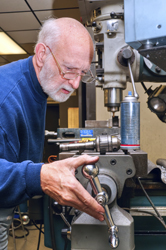Helping the elderly help the EU workforce
The ageing of society and the workforce is one of the dominant developments in modern European societies. This development poses challenges regarding the use of senior potential, both inside and outside the labour market. Labour markets are in need of higher participation rates of both women and older workers. To gain a better perspective on these issues, the project 'Activating senior potential in ageing Europe' (ASPA) formulated a threefold approach to guide its multidisciplinary research aims. These include gaining insight on the influence of organisational behaviour and public policies on the use of the potential of men and women over the age of 50. Another project aim is to learn more about the activity rates of individuals aged between 50 and 70, both in paid labour and unpaid activities (in particular care and volunteer work). This area of focus is particularly related to policies with respect to human capital investments over the life course. Thirdly, ASPA aims to identify policy strategies for organisations and governments to stimulate the participation of older adults and secure human capital investments over the life course. Consortium members include researchers from different scientific disciplines spanning demography, economics, sociology, gerontology, social psychology, human resources management and public policy analysis. ASPA has used large-scale surveys to analyse employers' behaviours, and desk research and interviews to map government behaviours. Project members tried to identify good practices at the levels of company, civil society and (national or local) government policies that facilitate ongoing investment in knowledge and skills. This is pegged to result in high activity rates for people aged 50–70. The main conclusions drawn cover a number of pertinent areas. For example, European employers are not yet ready to face the ageing of the European workforce. Little action is being taken to invest in older workers, to encourage them to stay until national official retirement ages or to hire older workers. Organisations that are more open to diversity among workers and that recognise the different and varying dimensions of productivity over the life course are more successful. They are better able to integrate older workers and benefit from their potential compared to organisations that cherish one single image of the 'ideal worker'. ASPA results have important implications for employers, offering them a basis for the re-evaluation of personnel policies in light of the demographic changes that lie ahead. The project also provides important insights regarding what conditions within an organisation can contribute to good practices in terms of the inclusion of older workers. Governments also have the opportunity to learn from ASPA outcomes. For one, it is important to realise that measures targeting the supply side of the labour market will likely falter if they are not supported and accommodated by employers' behaviours. Europe's older workers have a lot to offer the EU labour markets and ASPA results have succeeded in highlighting the benefits of their increased inclusion in the workforce.







